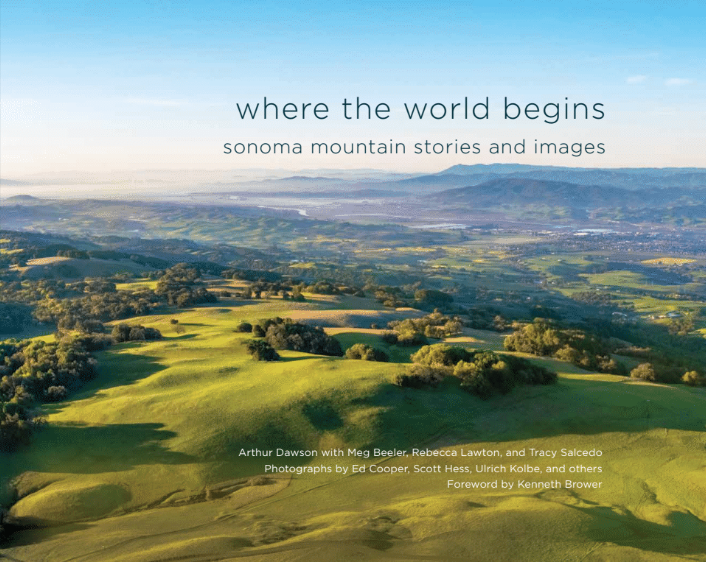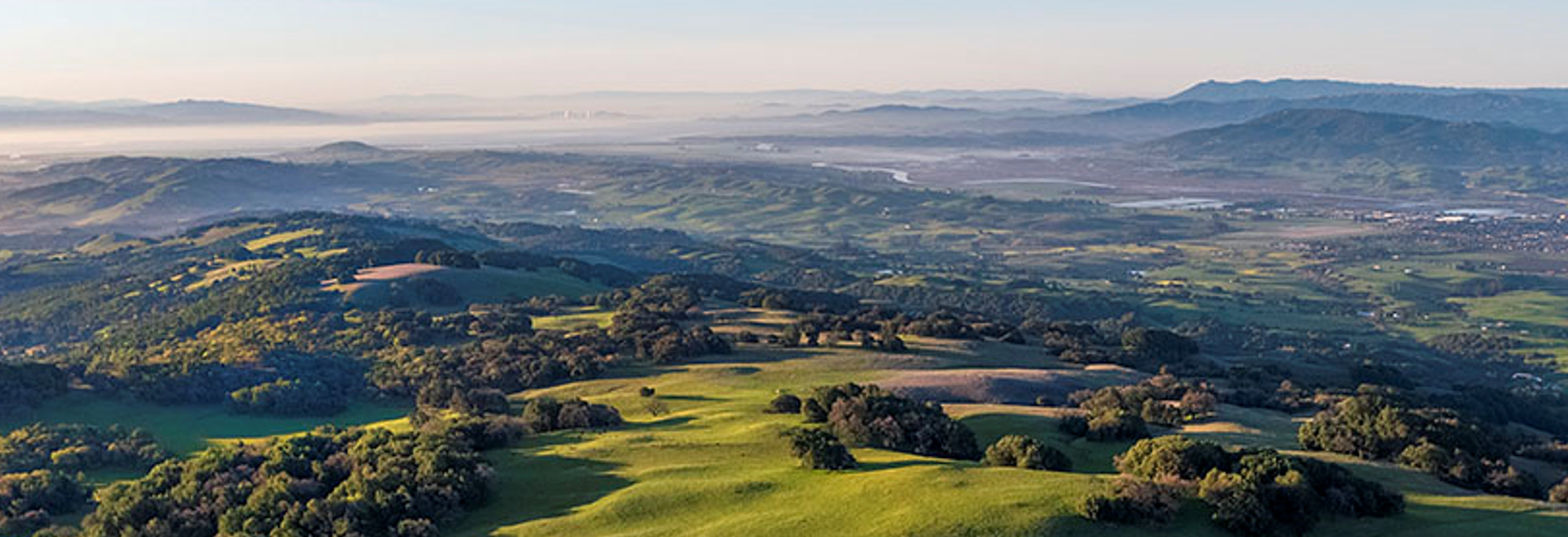Glen Ellen and Eldridge/SDC Are Inseparable:
This Reality Needs to Be Reflected in The SDC Specific Plan
This clear and impassioned description of the relationship between Glen Ellen and Eldridge/SDC was written by Tracey Salcedo, Glen Ellen resident and member of the Leadership Team of the SDC Coalition. As work on the SDC Specific Plan continues, SMP supports this view.
After a long lull, the specific planning process for the former Sonoma Development Center property is kicking back into gear. The focus is on Eldridge, but the fact is that, given the intimate ties between Eldridge and Glen Ellen, my little hometown is also entering a brave new phase of its existence.
As I’ve encountered proposals for Eldridge and participated in the planning process, I’ve been struck by the fact that, over and over again, the ties between the two places are either overlooked or misunderstood. While I find it disappointing that explaining the ties would be necessary at this stage of the game, it’s also an opportunity. And it has an unanticipated upside: I’ve once again fallen in love with you, Glen Ellen.
The Basics
- Glen Ellen and Eldridge are inseparable. If you look at a map, you’ll see that Eldridge is completely surrounded by Glen Ellen. As one local community leader put it, Eldridge is the hole in the Glen Ellen donut.
- What happens to Eldridge happens to Glen Ellen. If Eldridge becomes a resort, Glen Ellen becomes a resort. If Eldridge is urbanized, Glen Ellen is urbanized. If Eldridge becomes a model of sustainability and resiliency, Glen Ellen becomes a model of sustainability and resiliency.
- Eldridge is not a blank slate. Eldridge is now empty, hence the illusion. But Eldridge exists as part of Glen Ellen. Since their genesis in the nineteenth century, the twin villages have grown in tandem and possess the same intimate connections to the region’s wild places and to a legacy of caring. This connection can’t be monetized, but that doesn’t make the connection less valuable than money.
Glen Ellen in a Nutshell
- Glen Ellen is a small, tight-knit, rural village of about 700 households at its center, and more within the sprawling 95442 zip code.
- This language comes from the Land Use element of Sonoma County’s General Plan: Glen Ellen is a small village along Arnold Drive west of State Highway 12 … About 70 percent of the community is rural with rural residential and agricultural zoning.
- From the Glen Ellen Development and Design Guidelines: The small town character of Glen Ellen promotes a sense of community and an inherent openness which recognizes personal freedoms and varied lifestyles. The maintenance and enhancement of this small town character is of utmost importance to its residents.
- On the ground, Glen Ellen’s rural residential character looks like this: Homes on the north side of the Eldridge campus are on larger parcels, with the exception of those closest to the “downtown” area. It’s country living. On the south side of the Eldridge campus homes are closer together, but the mood is the same. It’s still country living. Whether you live in the apartments on Madrone or tucked in the woods on London Ranch Road, you live in a small town. You know the people in line with you at the grocery store. You meet up with neighbors to take a walk in the park or along the winding country roads. Your kids go to school and play sports with the neighbor kids, while you volunteer with the neighbors in classrooms or visit on the sidelines. You dance in the streets with your neighbors every October during the village fair.
- A growing number of second home owners have purchased in Glen Ellen for the same reason full-time residents do—because it is rural, charming, and friendly. These part-time residents boost the economy of Sonoma Valley when they’re in town, while their absences add to the quiet of village life.
A Matter of Scale
The argument that Eldridge should be able to accommodate thousands of residents and workers because it used to house and employ thousands of residents and workers is not valid. At its most populous, most of the residents of Eldridge did not leave Eldridge. They couldn’t, because they were disabled. To drop an equal number of people who are not disabled into the same place doesn’t replicate Eldridge, it blows Eldridge up (and Glen Ellen with it).
Many wonderful, innovative ideas have been proposed as part of the redevelopment process. Data collated as part of the previous community workshops supports these ideals. Bring on housing that’s affordable. Bring on housing for the developmentally disabled. Bring on community gardens and biodiverse agriculture. Bring on post-petroleum technologies. Bring on sustainable businesses. Bring on an “institute” that researches and implements principles of resiliency. Bring on visiting scholars. Bring on innovation.
But bring it on at a scale that both fits and benefits the village that already exists, on both sides of SDC. Bring it on recognizing that the existing village already embraces and lives by these ideals. Bring it on at a scale that ensures the children of local residents, as well as the greater community, can find their place here. Bring it on at the scale that enables the residents of the existing village to feel safe, and that cultivates, rather than dilutes, the small-town, natural values that drew us here and have kept us here.
To do this, it must be understood that the existing village is as important as the goal.
The Importance of Transparency
A number of proposals have emerged, developed by small groups of people reimagining what can happen on the property. There’s CEPEC, there’s the SDC Campus Project, there’s CAFF, there’s the Eldridge Enterprise, and there are other plans, without doubt, in the works.
The assumption of some committee members of the Glen Ellen Forum, and of the larger community, has been that the specific planning process, and the proposals it generates, would be community-driven. Most of the circulating proposals remain outside the specific planning process. The Eldridge Enterprise, developed by a “working group” of the SDC Coalition, is a troubling exception, especially as it begins recruiting endorsements. It is not community-driven. The specific planning process for Eldridge must remain transparent, otherwise trust in a community-driven process is broken.
The Myth of NIMBY
With the formation of the Glen Ellen Forum in 2016, Glen Ellen has helped host forward-facing community workshops to shape a vision and guiding principles for Eldridge’s redevelopment. The community’s approach to that redevelopment is pragmatic and realistic, but constrained by the realities of being unincorporated.
We know change is inevitable. All we want—and I feel confident saying “we” here, because Glen Ellenites helped collate the feedback from the Hanna and Dunbar workshops—is for change to be moderated so that the existing community survives and has the ability to define itself, even as it absorbs change. The interests of the immediate community should carry the same weight as the interests of prospective developers, the broader community, and private, commercial, nonprofit, and political interests.
A Vision for Eldridge
“Eldridge is a place where people of diverse backgrounds and interests live and work together, where natural resources are conserved and enhanced, concepts of sustainability and resiliency are put into practice, cultural legacies are honored, and compatibility with surrounding communities is preserved.”
—Vision Statement Developed for Community Consideration at the Hanna Workshop, June 2019
As we’ve had to circle up, yet again, to create a vision for the site, I feel like we, as representatives from Glen Ellen, are now outside the process. We are forced to be reactive to proposals developed outside the process, rather than proactive in helping develop proposals. In light of recent developments, I have to ask: What does community-driven mean? To me, it means that no matter where proposals originate, whether in the city of Sonoma, or Oakmont, or Santa Rosa, or the hills of Healdsburg, they reflect not only the desires of their proponents, but also an understanding of what is fundamental: Glen Ellen and Eldridge are inseparable. What happens to Eldridge happens to Glen Ellen.
Look at it this way: Glen Ellen is the village about to be inundated by the dam. The powers-that-be believe the dam is a greater good, and the little village in the valley should just roll over and accept obliteration. My response is, if you inundate Glen Ellen and Eldridge—their rural characters, the peace that comes when you drive up Arnold Drive into the embrace of oaks and open space—you destroy exactly what you seek to exploit.
I’ve said this before and I’ll say it again: The residents of Glen Ellen will be the most profoundly impacted of all communities by what happens in Eldridge. Everyone else gets to go home, but we have to live with it—the density, the traffic, the change. All we want to do is inform that change.
Community is priceless. And worth fighting for.
Connect with SMP
Sonoma Mountain – The Book!

Where the World Begins: Sonoma Mountain Stories and Images draws you into our inspiring natural treasure at the heart of southern Sonoma County. Local Bestseller, IPPY Award 2020. Two purchasing choices below:


